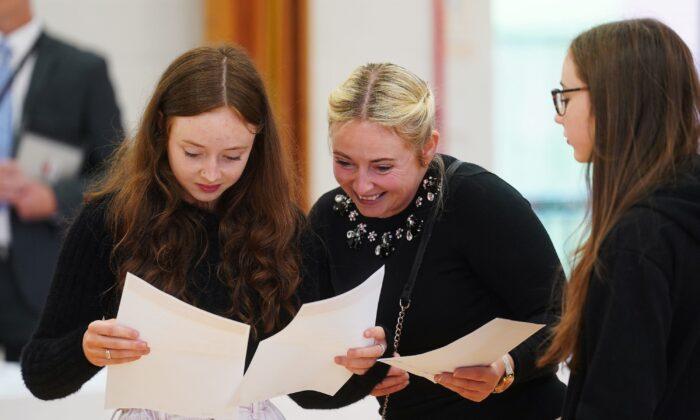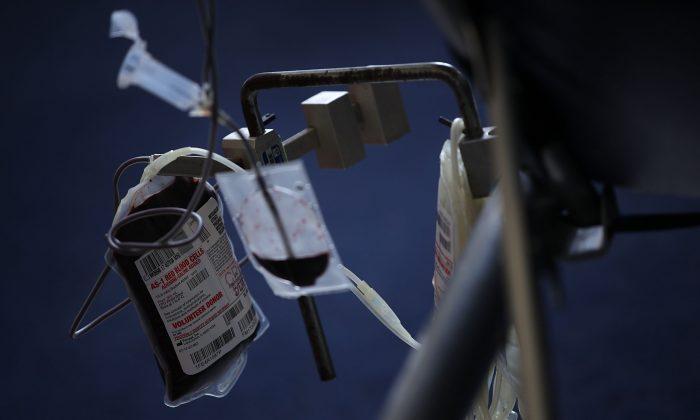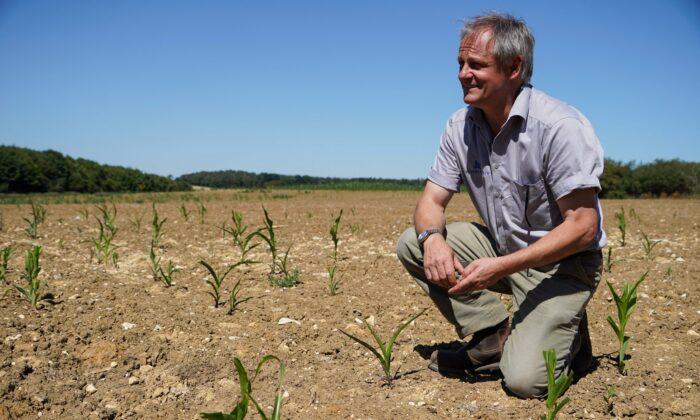British school leaving grades have fallen, according to data published Thursday, as exam boards reigned in “grade inflation” from the lockdowns, when schools were shut and A-level exams replaced with teacher assessment.
This is the first time proper exams have taken place in three years. During the lockdowns, grades were based on teachers’ assessment of how they thought students might perform based on work done in the online classroom.
A spokesperson at the Department for Education told The Epoch Times the drop in grades was to be expected.
“In a nutshell, it was a completely different way of assessing results and therefore we have a completely different outcome. What we required now is a return to normality after the pandemic,” the spokesperson said.
In the UK students are required to stay in school until 16. Some choose to stay on until the age of 18 to take those exams needed to get to university.
Students specialise in sciences or humanities at 16 already.
The “grade inflation” following 2020 has led to chaos in university enrolment.
In 2020, the government had to reverse a decision over how to grade exams in England, rejecting the grading system that had replaced the cancelled exams.
The government reverted to only using those CAGs submitted by teachers to award exam results.

Grades to Go Down Even Further
Regulators said students can anticipate grades to go down even further next year as part of a two-year plan to return to pre-lockdown boundaries.This year, 35.9 percent of students got A grades compared with 25.2 percent in 2019. And 62 percent of students got a B grade compared with 51.1 percent in 2019.
“Today’s results are higher than those of 2019, and—as we have always said—lower than in 2021 when there was a different method of assessment,” said Jo Saxton, chief regulator at Ofqual.
“I felt strongly that it would not have been right to go straight back to pre-pandemic grading in one go,” Saxton added.
Independent schools saw a dramatic increase in the number of students receiving A grades in their A-levels, from 61.3 percent in 2020 up to 70.4 percent last year, then down to 58 percent this year.
Secondary comprehensive schools went from having 33.5 percent of students achieving A grades in 2020, to 39.4 percent in 2021, to 30.7 this year.
Despite the lower grades, the Department for Education (DfE) expects most students to get into the university of their choice.
Meanwhile, Education Secretary James Cleverly noted things were different this year.
“For that, I want to congratulate them and say a huge thank you to those who helped them get to this point,” he added.




